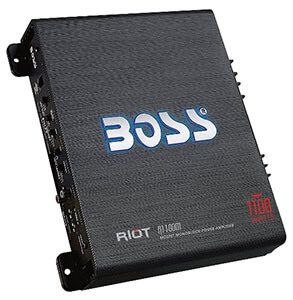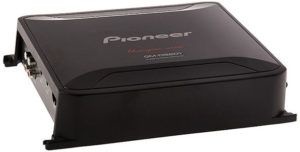HOW TO INSTALL A CAR AMPLIFIERA Story by Ben CoxYou could pay somebody to install this for you. However, it
is anything but an especially troublesome venture for anybody even marginally
comfortable with auto electrics. For what reason not do it without anyone
else's help and put the cash spared towards new speakers or that subwoofer
you've supposed about?
We will talk you through the first strides in installing a
car amplifier. Each make and model of car is unique, so we can't give exact
guidelines to your particular vehicle yet we will take you through what you
have to do. In doing that we'll address: 1. Amplifier writes
and reconciliation 2. What you'll
require (instruments and parts) 3. Installing the
amp 4. Running force 5. Speaker hookups 6. Finishing up 1. AMPLIFIER TYPES AND INTEGRATION If you've got your work done, you'll see how to measure your
amp for the speakers you expect utilizing. You'll additionally realize that
amplifiers accompany different quantities of channels and usually two speaker
input alternatives. Channels and speaker inputs have a significant bearing on to
what extent the install will take. A mono channel amp has just a single yield
and that you'll use for driving a subwoofer. A two-channel amp will in all
probability be snared to the front speakers, although you could connect the
yields to make the subwoofer. Moreover, a four-channel amp works with either four speakers
or the two fronts and a subwoofer. The speaker inputs you'll use relies upon whether you're
staying with or supplanting the processing plant head unit. Manufacturing plant
units once in a while have pre-amp yields, so you'll be tapping into the
speaker wires and bolstering them to the speaker-level contributions on your
amplifier. A reseller's exchange head unit will likely have pre-amp yields that
feed straight into the amplifier inputs. Anyway, numerous channels on your new amplifier and anyway
you feed the signs to it, there's one other piece of this task to recall: you
will likewise be running wires from the amp out to every one of the speakers. 2. WHAT YOU'LL NEED Notwithstanding the amplifier itself, go out and purchase: ·
Amplifier wiring pack. ·
T-tap connectors ·
Zip ties or electrical tape. ·
As for instruments, you ought to have: ·
Pry instruments for expelling trim pieces. ·
Crosshead and level bladed screwdrivers. ·
Pliers ·
Wire strippers ·
Soldering iron ·
Electric penetrate ·
Utility cut ·
Socket set 3. INSTALLING THE AMP Begin by choosing where you need this mount. A critical
viewpoint to consider is wind stream for cooling. Amplifiers can get warm and
warm is no companion of gadgets. Remember this when installing an amp. The most mainstream places are: ·
Traveler side firewall ·
Having settled on an area, expel any trim, check
where you need the gaps to go, and after that penetrate. Secure the amp with
the screws gave.
4. RUNNING POWER This segment covers installing the power, ground and amp
turn-on wires. In the first place, disengage the battery. The amp draws as of now specifically from the battery
through an expansive width red link. Interface the wire to the array; at that
point install an in-line fuse. This is fundamental to ensure your high-esteem
framework! String the power link through the firewall and into the
lodge. You may need to bore a gap for this. Assuming this is the case, endeavor
to fit a proper grommet. Expel the kickboard and entryway scrape boards and run the
power wire through to the rearward sitting arrangement. Lift out the seat pad
and string the cable into the storage compartment. The amp needs a turn-on wire, so it powers-up when the head
unit is turned on. This joins to the turn-on yield at the back of the head
unit, so that needs to leave the dash. Each vehicle is unique however this, for
the most part, implies evacuating the trim pieces on each side of the middle
support, at that point unbolting and pulling back the unit itself. On the off chance that the head unit doesn't have a turn-on
yield, associated with the start wire hurrying to the head unit. This can
prompt a capable of being heard pound as the amp turns on, so an option is to
purchase a line turn-on converter. Run the turn-on wire back to the amplifier. Associate one end of the ground wire to the amp and the
other to a decent body ground. 5. SPEAKER HOOKUPS Disengage the cables originating from the head unit and fit
the new wires to the speakers. If the head unit has pre-amp yields, interface wires to
these and run them back to the amp. Run them down the contrary side of the car
to the power and turn-on wires to maintain a strategic distance from
obstruction. If the head unit needs pre-amp yields, which is typically
the case with the production line installed the framework; you'll have to
associate with the speaker wires. You can do this at the taking unit itself or
off at the individual speakers. Interface your cables utilizing either T-taps
or by stripping, grafting and fastening the joints. At the amplifier connected to wires from the pre-amp yields.
In case you're utilizing the speaker wires themselves, these go into the
speaker level terminals on the amp. 6. Completing Before supplanting all the trim, you've evacuated check
everything works. Reconnect the battery and turn the framework on. Confirm you
hear sound from every one of the speakers and that the amp turns on with the
head unit. Set up your amp following the directions provided. Re-install the head unit. Before returning trim use, zip
binds or electrical tape to anchor every one of the wires. You don't need them
tapping or rattling while you drive! Wrap up by reinstalling all the trim. Spare cash by installing a car amplifier yourself! While updating your car sound framework, you usually need
the best car amplifier you can manage. For what reason not spare some cash to
put towards the amp by installing it yourself? Installing an amp is explicit employment, particularly on
the off chance that you've had some past involvement with vehicle electrics. In
only a couple of hours, you'll be getting a charge out of more profound,
clearer and crisper music from your car's speakers. © 2018 Ben CoxAuthor's Note
|
StatsAuthor
|



 Flag Writing
Flag Writing